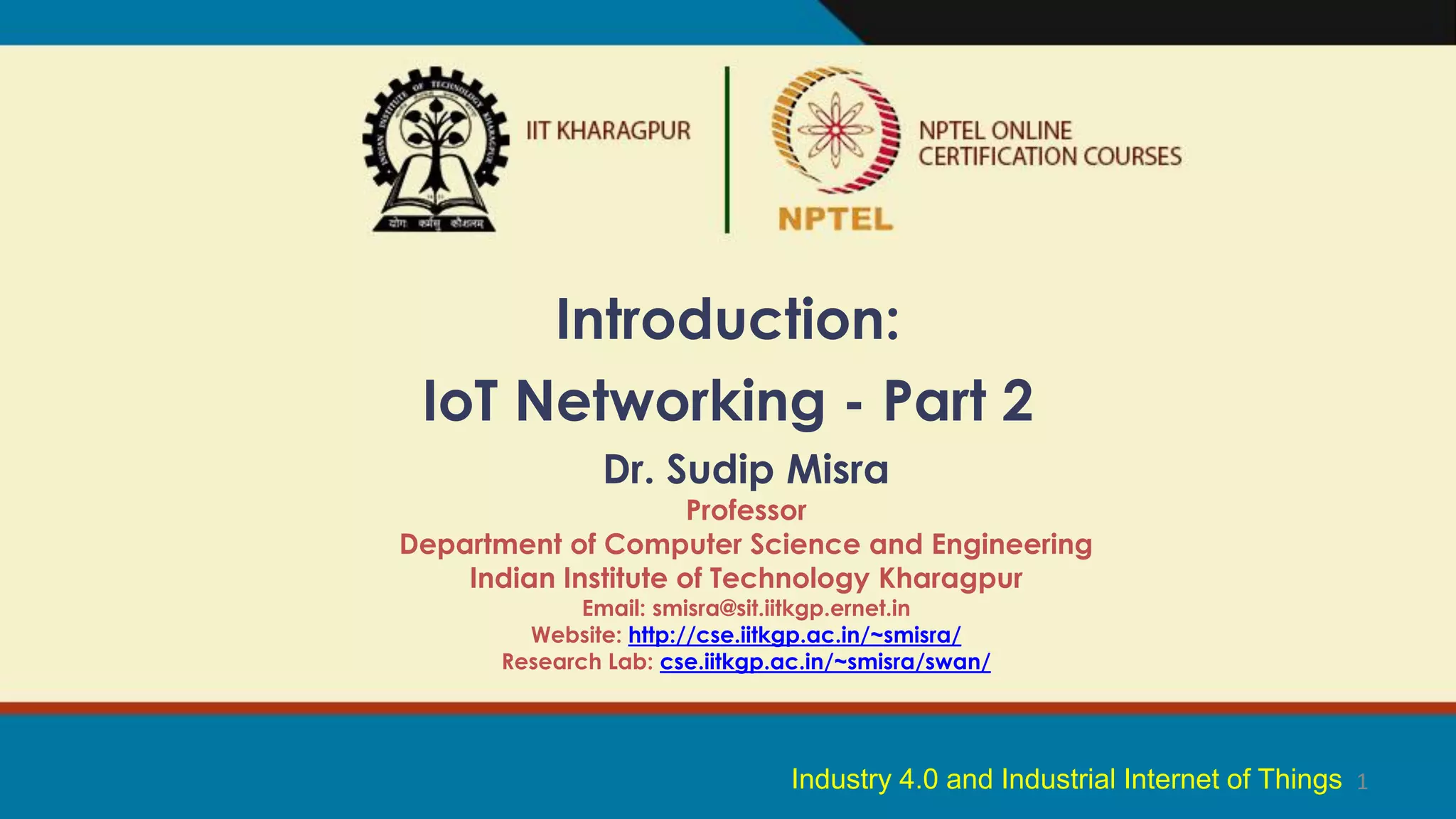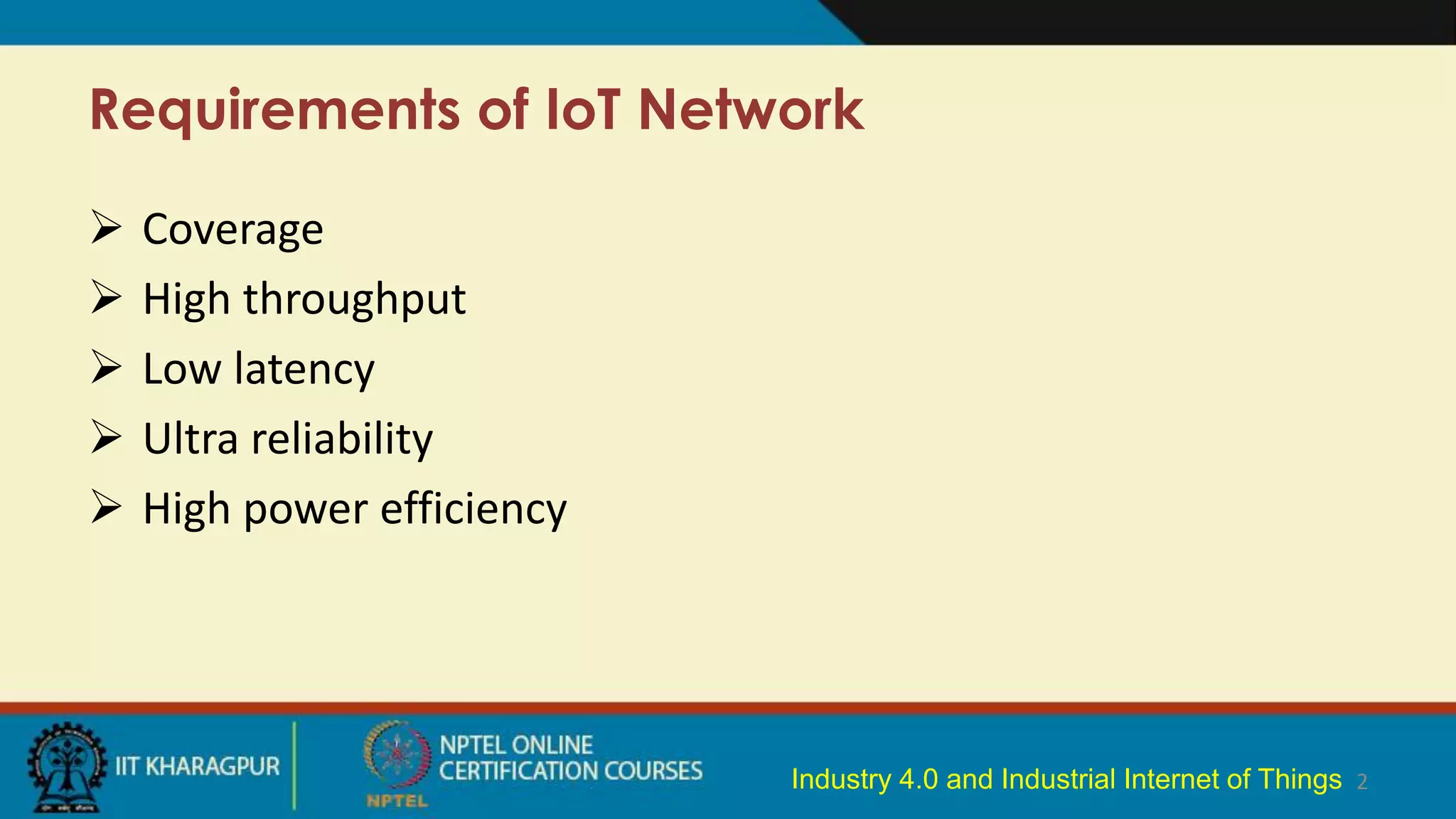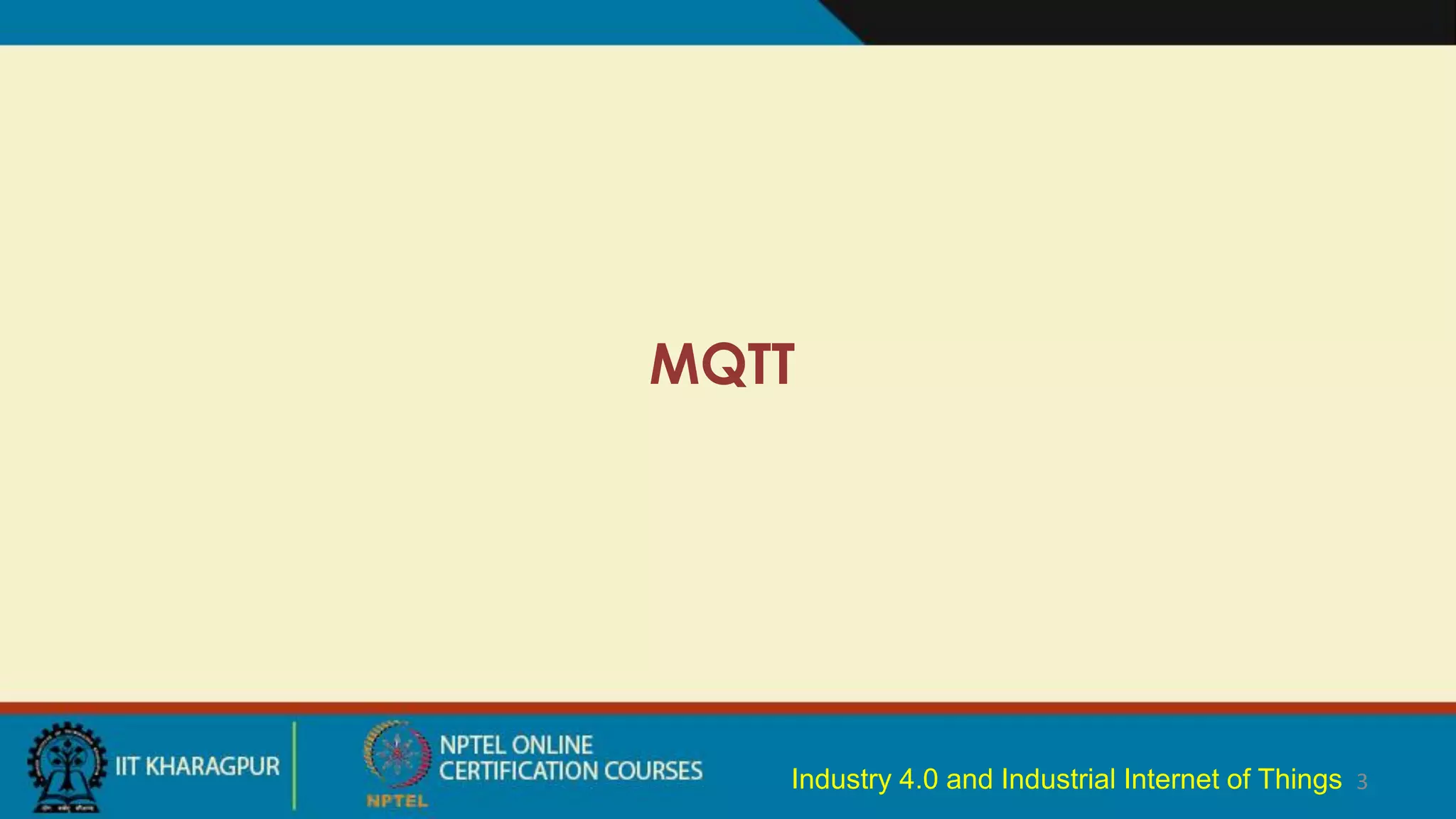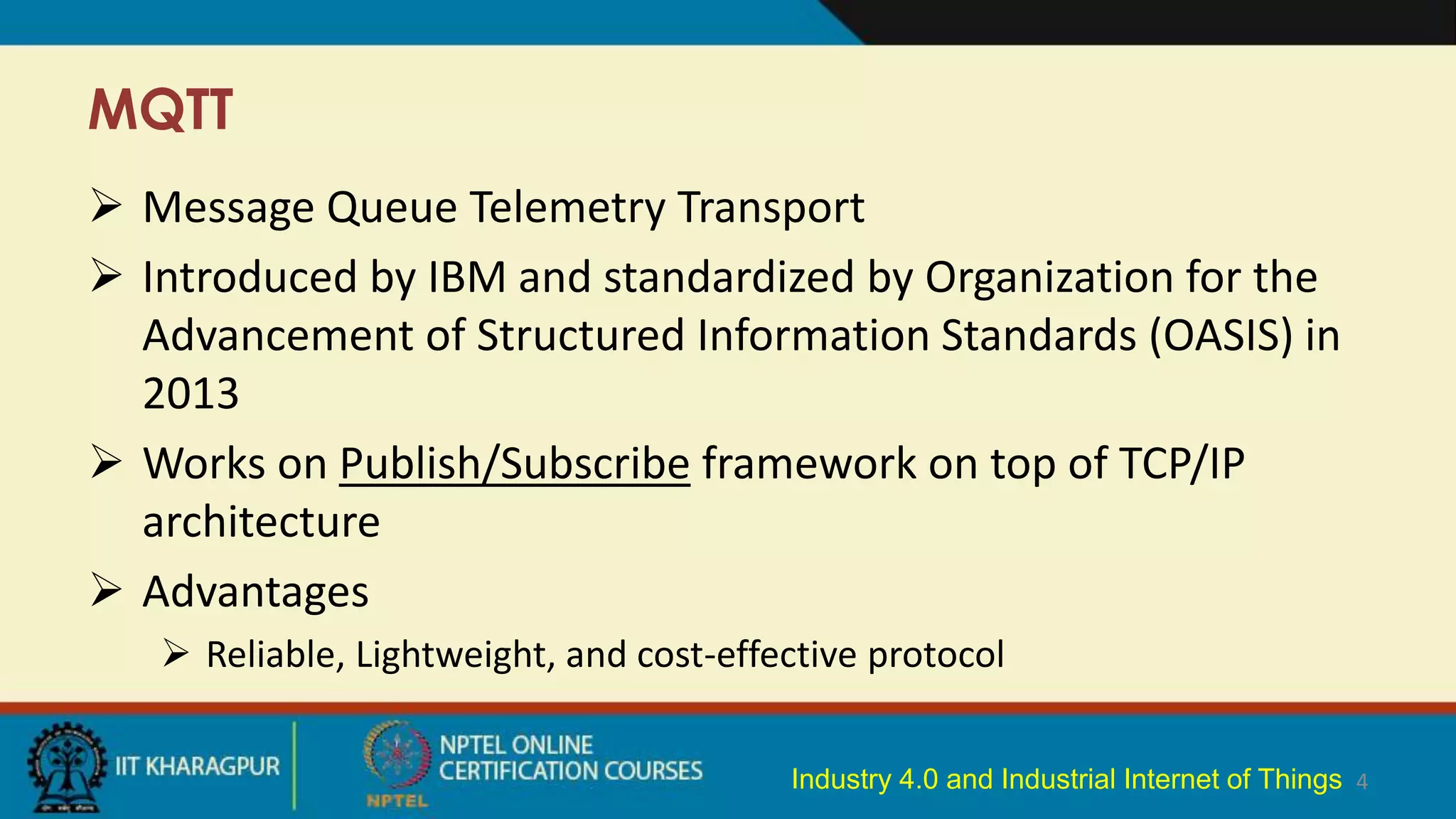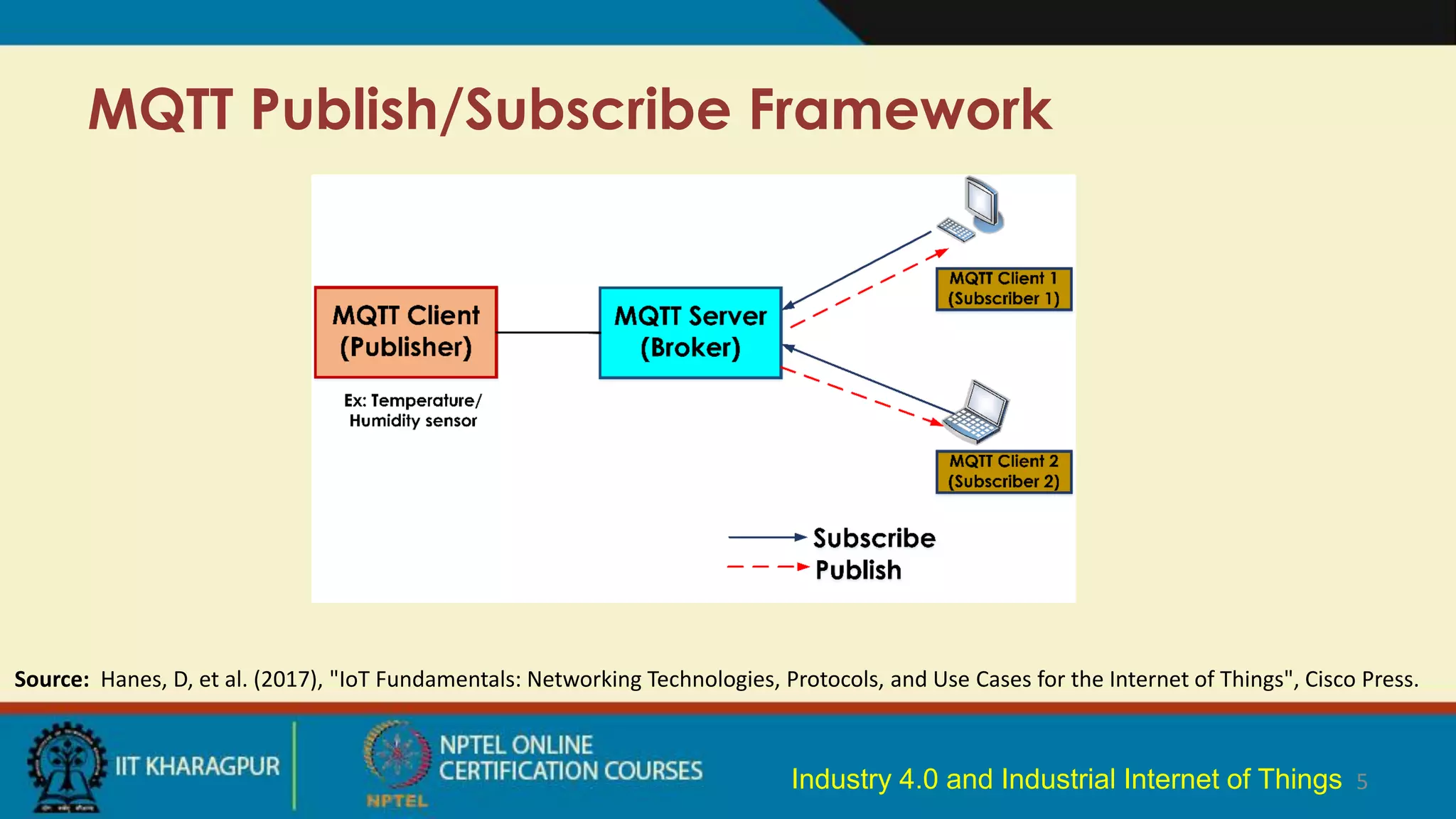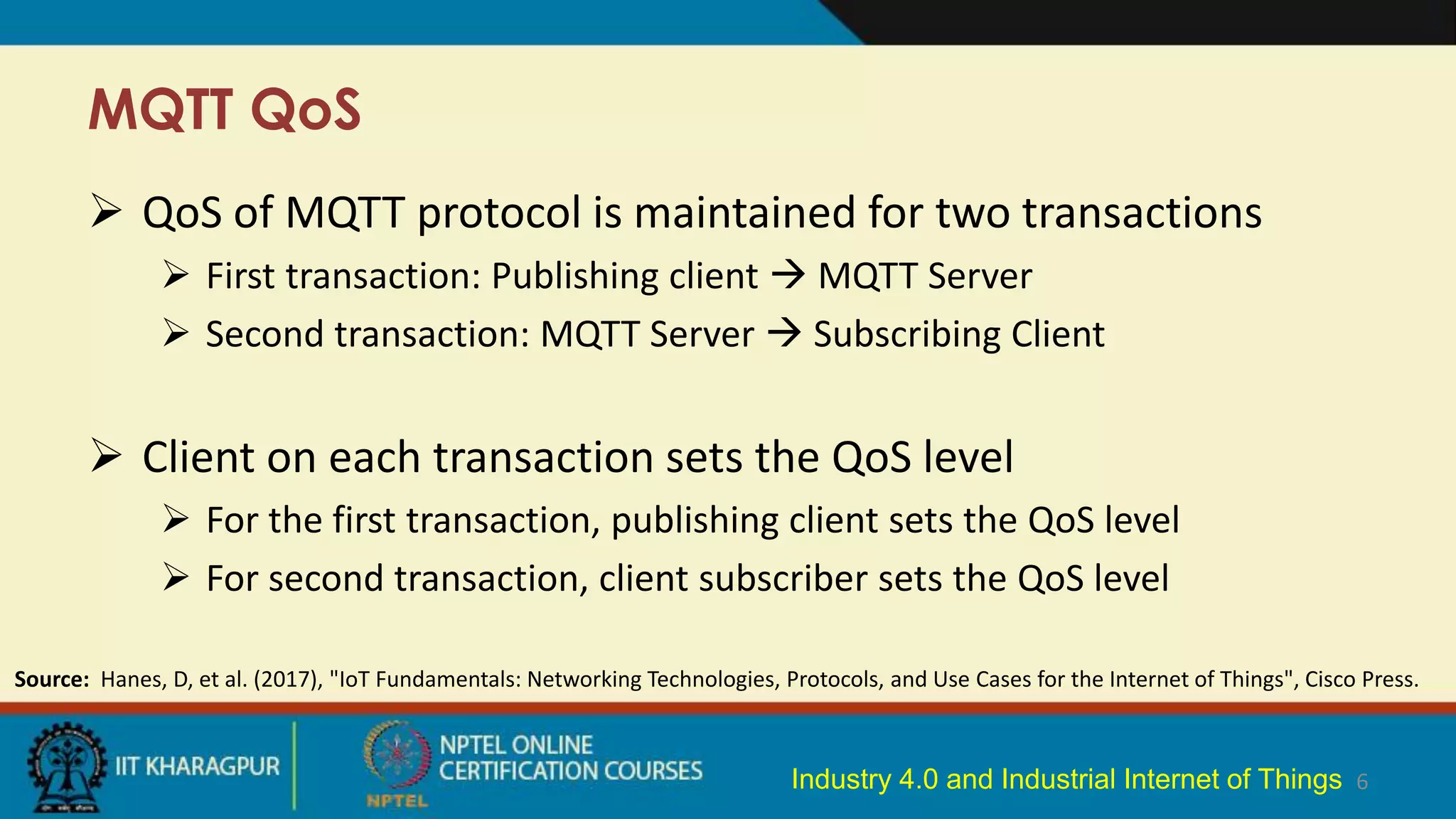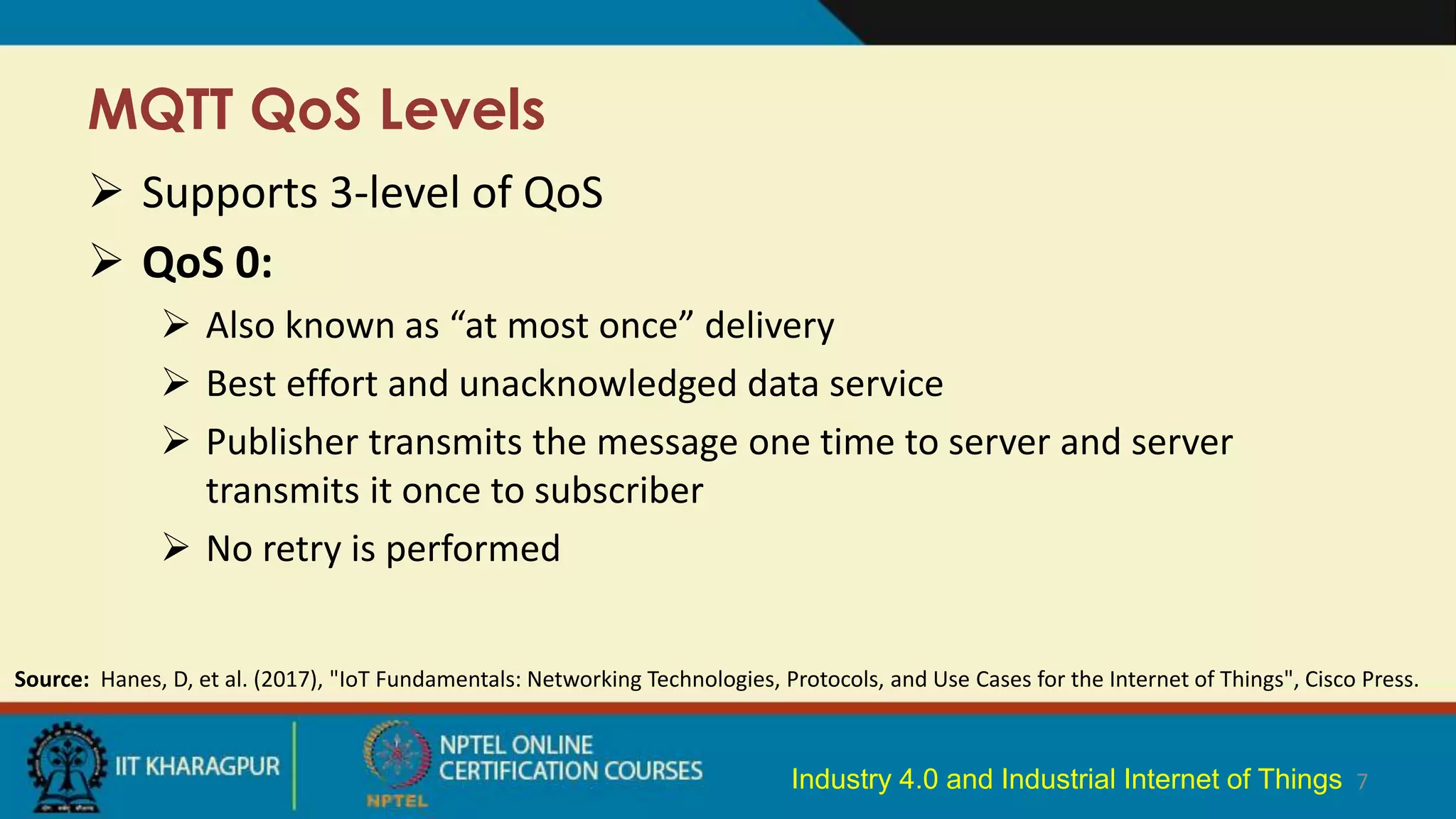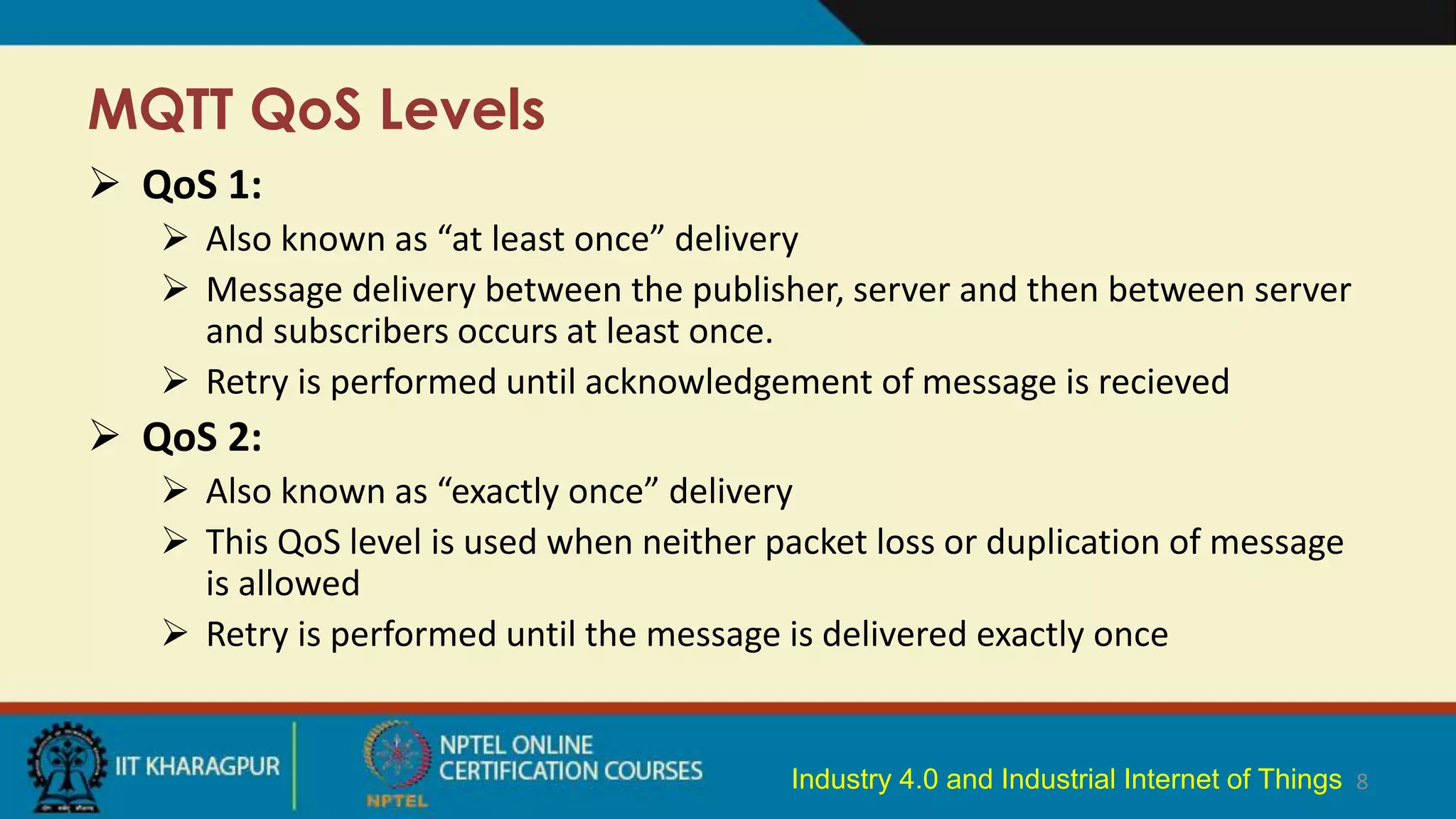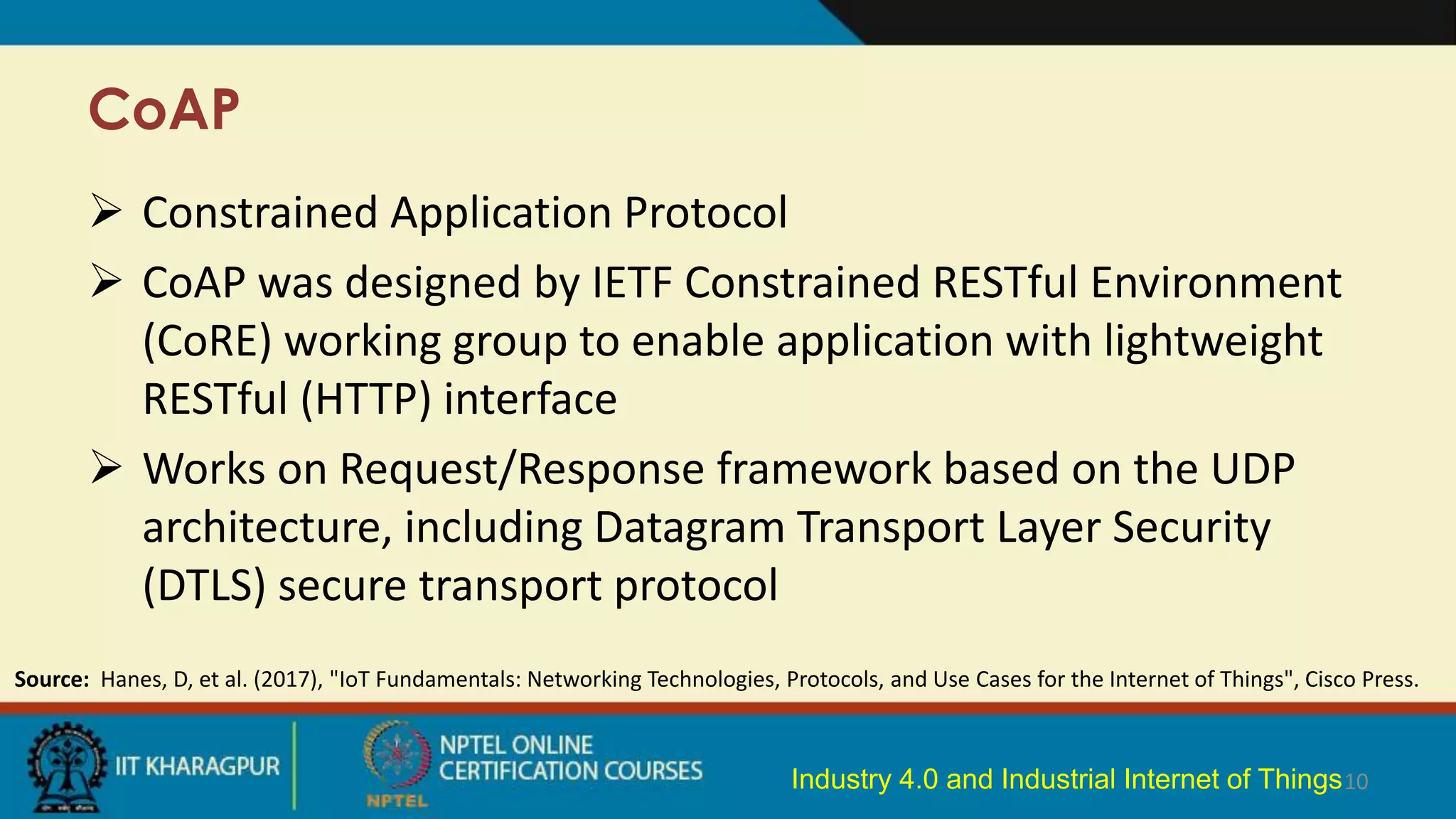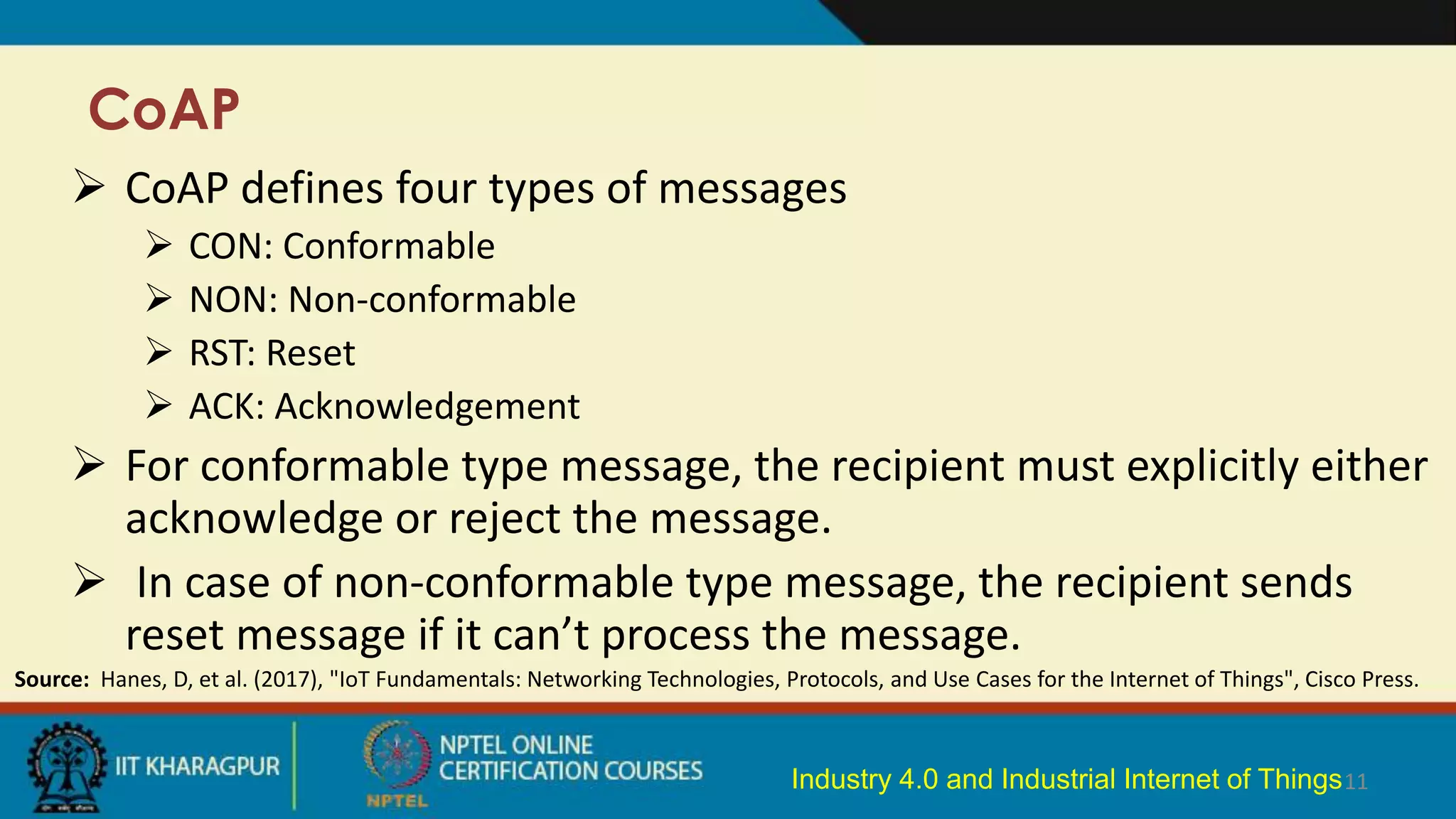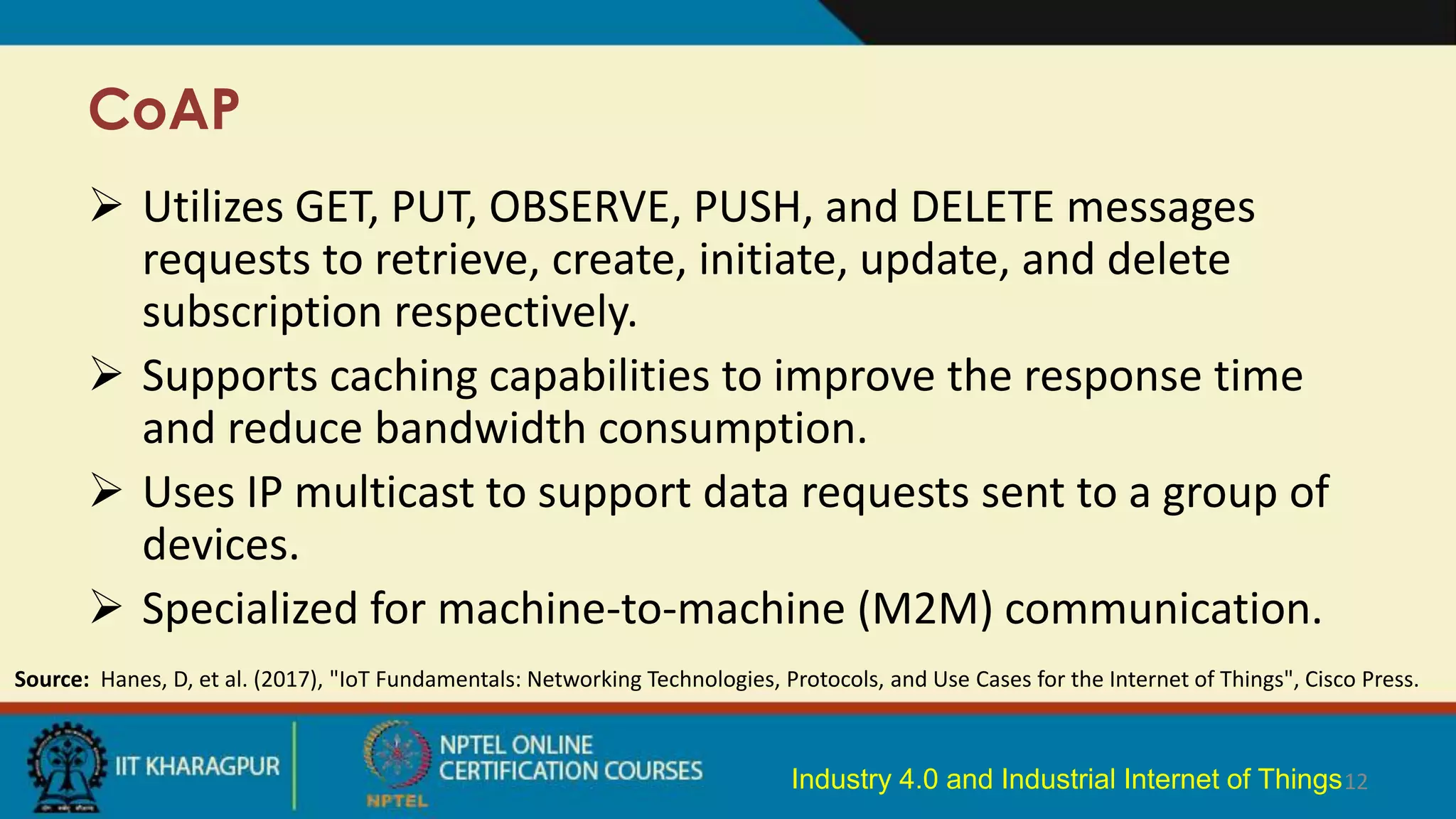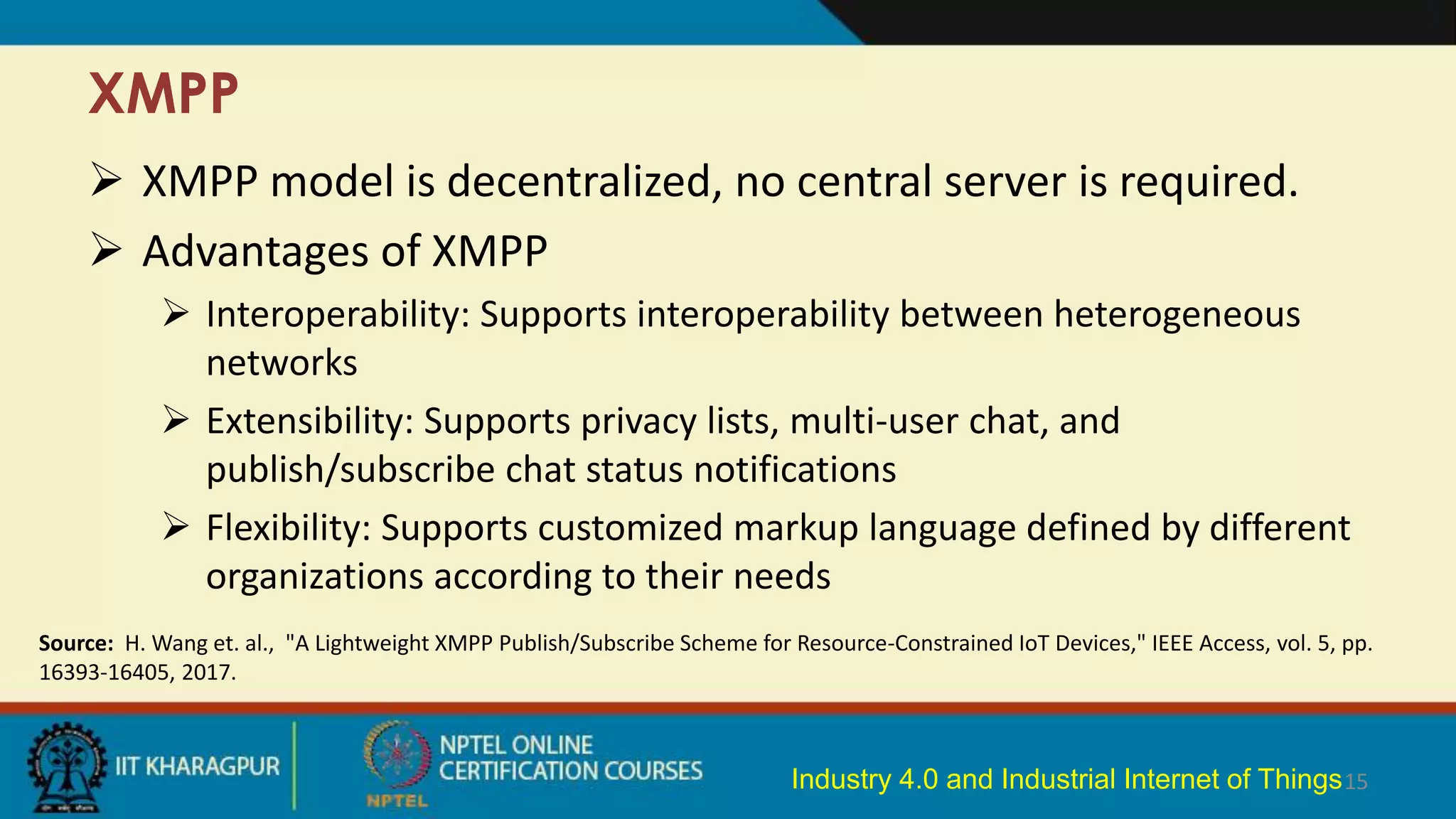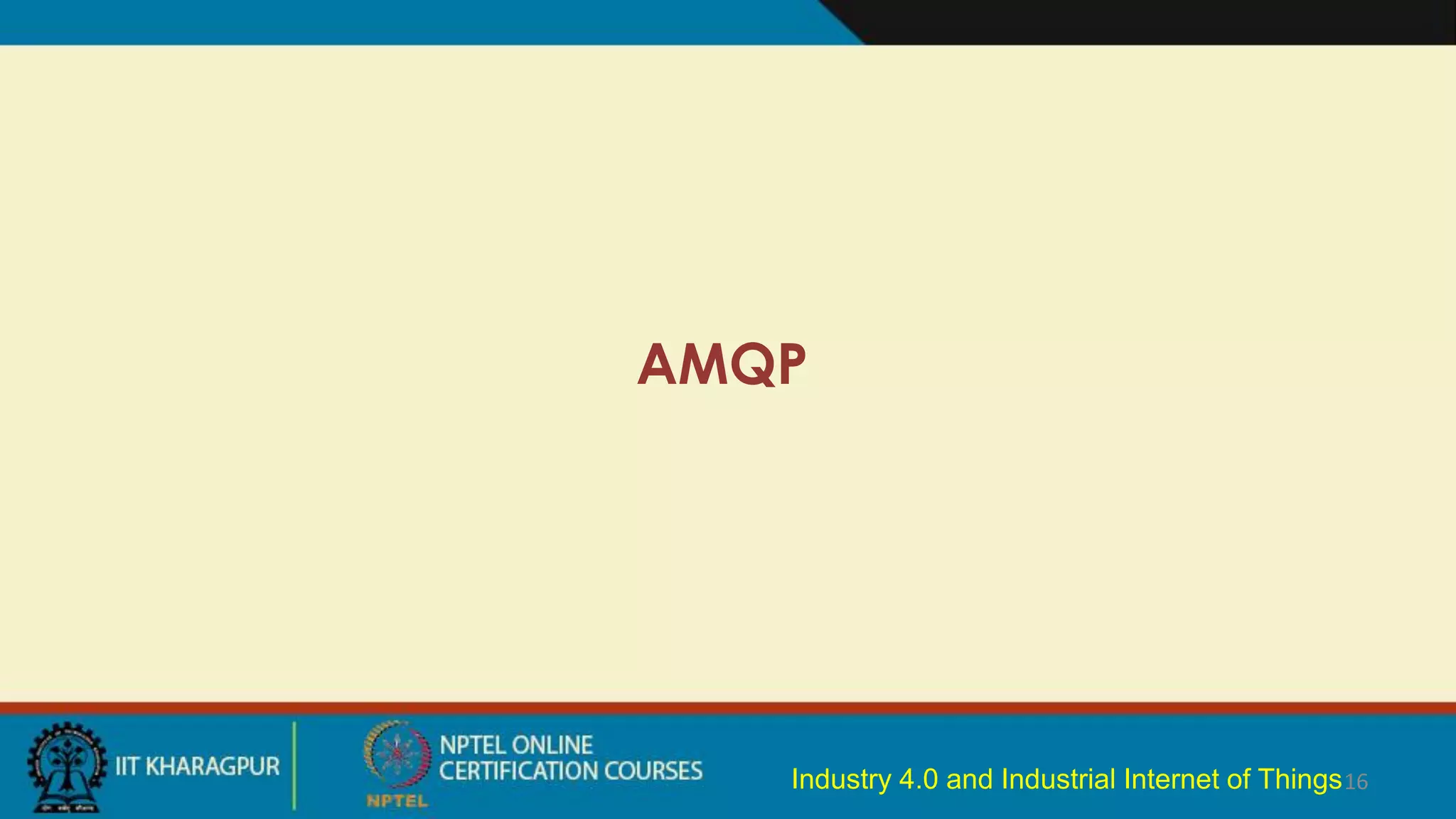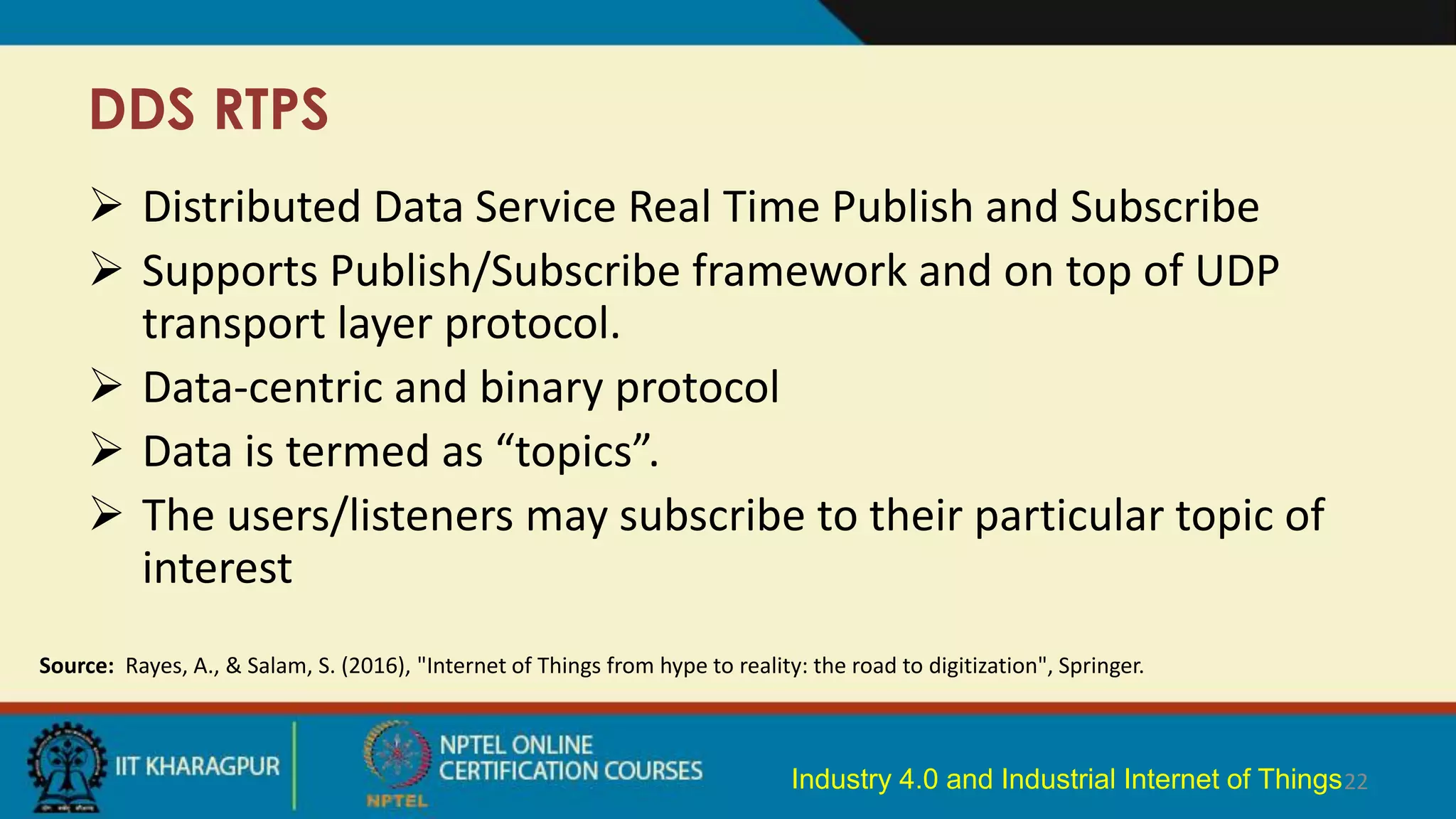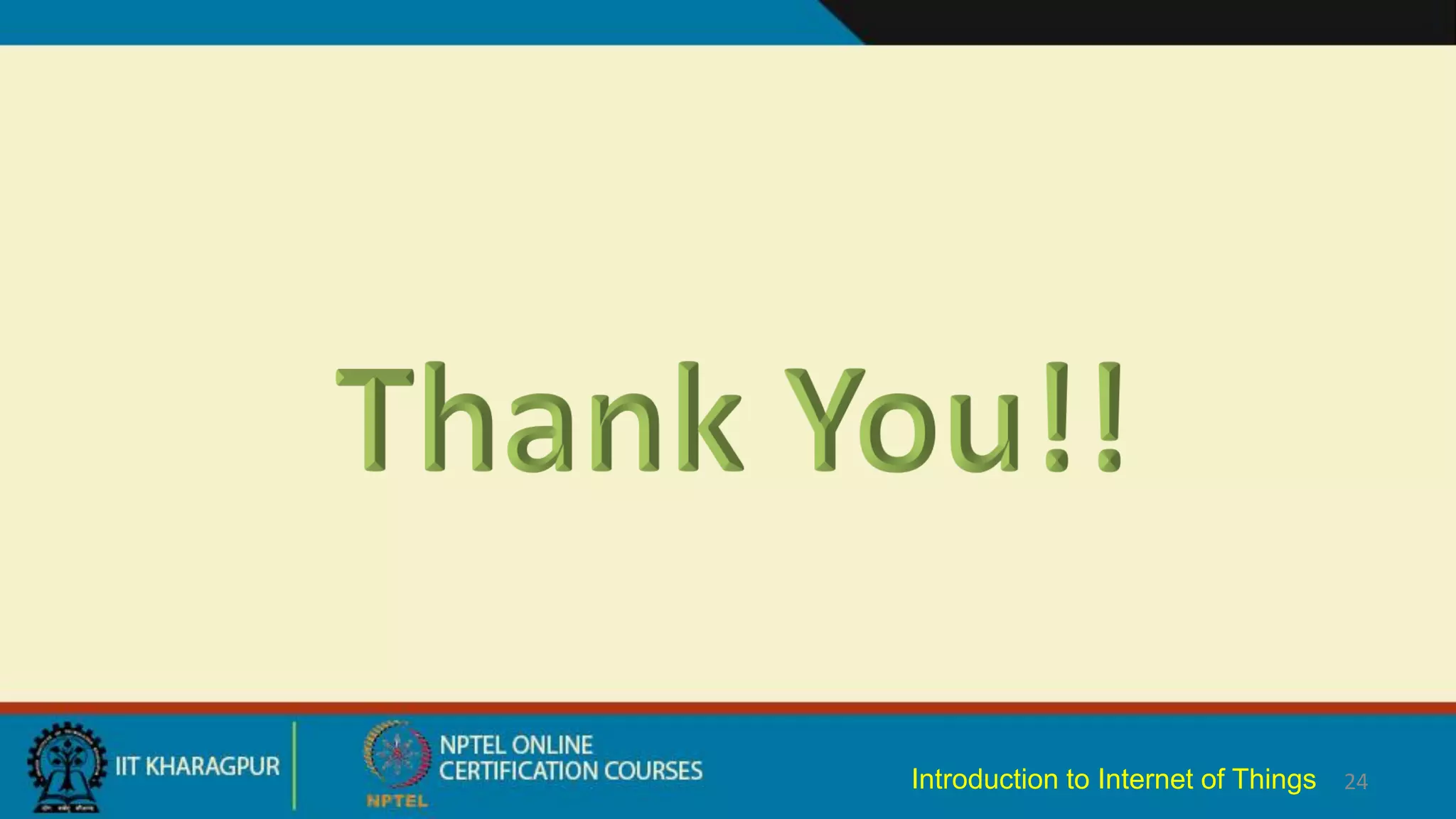The document discusses several common IoT networking protocols: - MQTT is a lightweight publish/subscribe protocol that works over TCP/IP and supports three quality of service (QoS) levels. - CoAP is designed for constrained devices and machine-to-machine communication using a RESTful request/response model over UDP. It defines four message types. - XMPP supports publish/subscribe messaging over TCP and uses XML, allowing for interoperability and extensibility. - AMQP is optimized for financial applications using a binary protocol over TCP, and guarantees message delivery through different levels like at-least-once and exactly-once.
